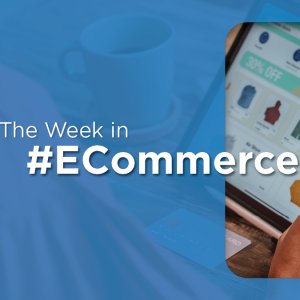The Generation Gap in Your Workforce

STORY INLINE POST
It seems that there is a war underway to find out which generation is the best: baby boomers, millennials, Generation Z or any new generation that may follow. We read complaints from different businessmen and entrepreneurs about some of the attitudes of their younger employees and vice versa. We also hear complaints about the "old-fashioned" attitudes of company leaders, managers or of anyone in charge.
Let's start by defining each generation (although the dates vary depending on the source). According to El Financiero:
- Baby boomers are people born between 1946 and 1965.
- Generation X, born between 1965 and 1982.
- Millennials (Generation Y), born between 1981 and 1996
- Generation Z, born between 1996 and 2012
- Generation Alpha, born between 2013 and 2025
Now, a brief description of each generation, according to UNAM:
Baby boomers: They grew up during a time of peace and freedom. Ambitious, motivated to achieve personal and work goals.
Generation X: Analog technology and evolution to digitalization. Nonconformists and go beyond the obsession of success.
Millennials: Beginning of internet and digitalization. Intransigent, children of baby boomer parents and older Generation X.
Generation Z: Direct childhood during the Internet. Irreverent, children of baby boomers and Generation X.
Now that you understand these characteristics about each generation, I invite you to visualize your staff and identify which generation each one belongs to. Surely, you have some two or three positive aspects to highlight about each one, as well as some negatives.
The important thing about recognizing the makeup of your workforce is that it will allow you to understand the reason for certain behaviors or ideas and to apply strategies that allow you to get the best out of each one, while also helping the different generations to empathize and come up with incredible ideas instead of problems due to misunderstandings.
Who's Who?
In my company, it is very clear who is who because of the following factors: Baby boomers arrive 15 or 20 minutes before their working hours to take the time to go to the bathroom, have a coffee, fix their equipment or workplace and clean up, if necessary, even if that is not among their duties. Millennials arrive right at their start time or even 10-15 minutes late; they have coffee, go to the bathroom or even go out again to buy something at the drugstore to have breakfast before starting to work.
Baby boomers have this strict sense of respect for rules and schedules, while millennials are more interested in the result than the form. That is, if they can give you the result you asked for by working five hours, they will work five hours and give you what you asked for; baby boomers will give you what you asked for and ask, "What else is there to do?”
On the other hand, millennials have been of great help in the company because of their digital knowledge, which has saved us time, money and effort in many situations, things of which baby boomers have no idea. It is even a challenge to take baby boomers to the digital era; you have to start with the basics and surely, they will be limited in this area.
Another important point is the motivators. A baby boomer is motivated by salary, as simple as that, and to continue climbing the company ladder. For them, the job comes first. A millennial is motivated by emotional salary (of course, combined with a competitive salary): having the ability to leave early on Fridays, grocery or gas vouchers, psychological or educational support within the company, more vacation days, etc. They want a balance between enjoying life and working.
What worked for me?
1. Identify each person's strengths and weaknesses.
2. Identify which aspects of each brought value and which did not.
3. Talk directly and honestly with them about the things they were doing very well and where they could improve.
4. Listen to what is most important to them in terms of work.
5. Communicate to the whole team the activities that each one will be doing, the limits, the possibilities and the crossover points between each generation.
6. Hold weekly brainstorming meetings on conflict resolutions and creative processes.
The Key Is to Customize
To achieve success as a company among the different generations, we must leave stereotypes behind and start to get to know our employees, their expectations and motivations. From there, we can generate strategies that allow us to leave generalization behind and bet on personalization.
Currently, all associates want to be seen as an integral person, not only as the employee who works from 9 a.m. to 5 p.m. For them, personal life matters and there is a world of possibilities after working hours.
It has been found that allowing each employee (as much as possible) to choose their benefits has provided large companies with good results. We could call it a personalized motivation program, where within a list pre-established by the employer, the employee can choose the benefits they like the most and that they believe add value to their work life.
Let's Make Friends
Regarding how to help all generations coexist in a positive way, it is easy: integration activities!
Nowadays, there are companies that are dedicated to carrying out these integration activities, for many purposes and of all types. They can range from two or three hours on a Friday in the office to a field day or even a trip out of town.
The important element is that everyone understands that the purpose of these activities is to get to know each other, understand each other and generate bonds between all colleagues, from all areas, from all generations. In this way, we will create more than work teams; we will create fellowship, a community that embraces, understands and works toward a common goal and above all, and most importantly, a group of people embracing diversity in all senses.
My invitation on this occasion is that we always be aware of our work teams, their personal lives (as far as they allow) and their work performance; that we care about integration and that we never forget that everyone is an individual, rather than just part of a team, and, therefore, their needs are totally different.








 By Luis Fernando Pelayo | Founder -
Mon, 08/01/2022 - 11:00
By Luis Fernando Pelayo | Founder -
Mon, 08/01/2022 - 11:00
















